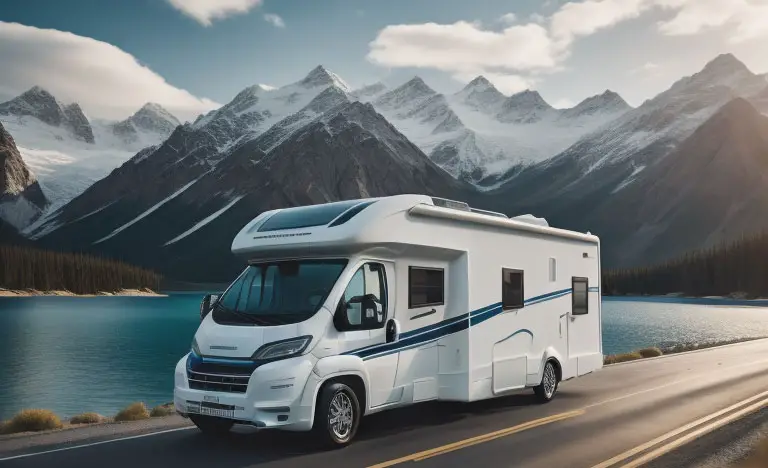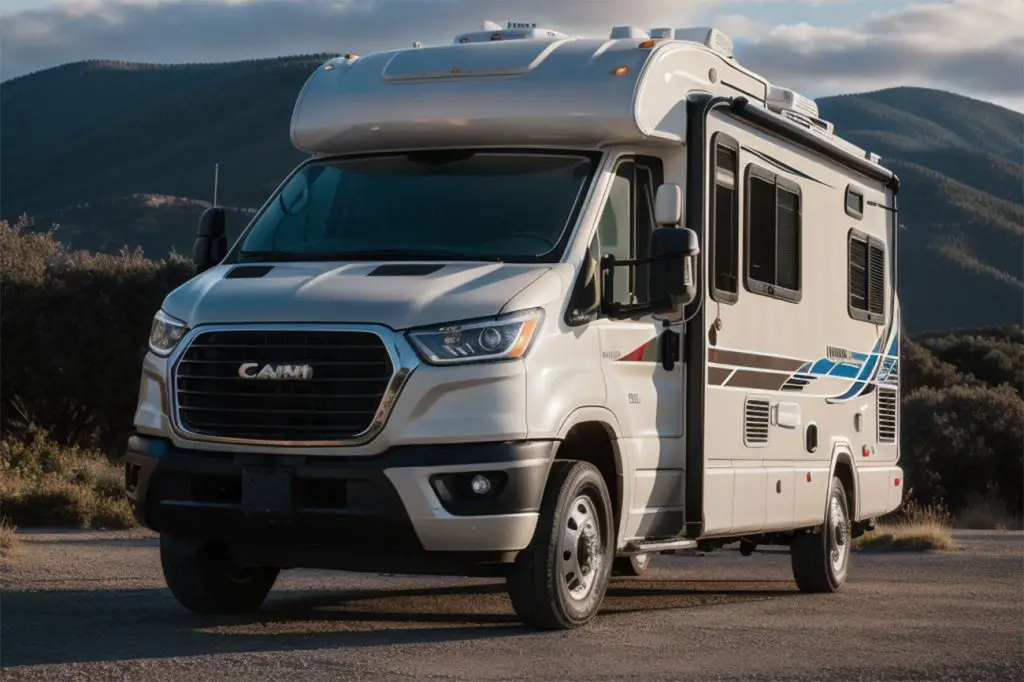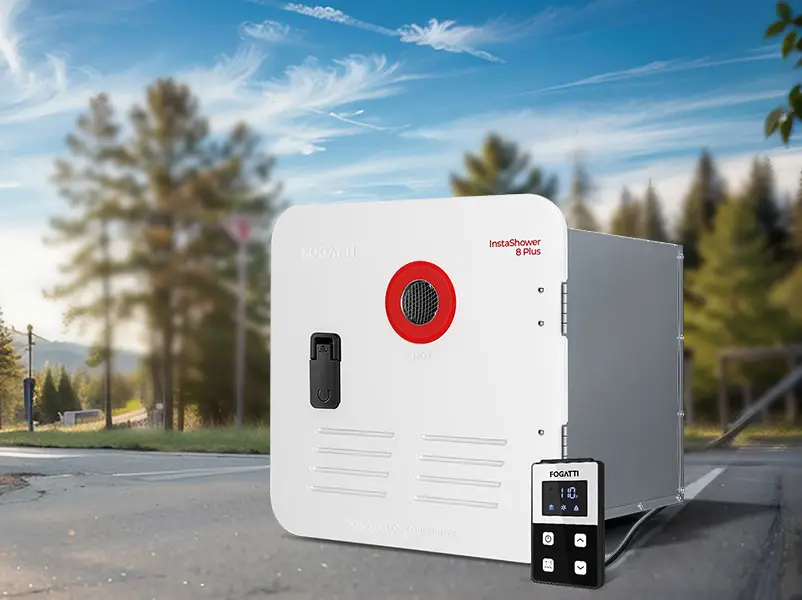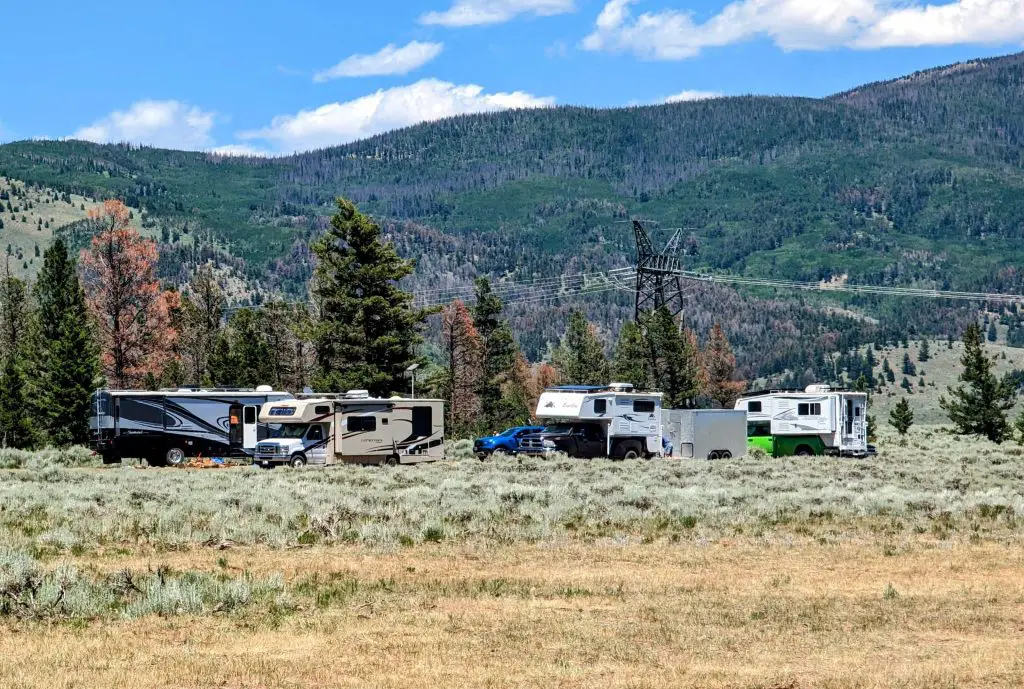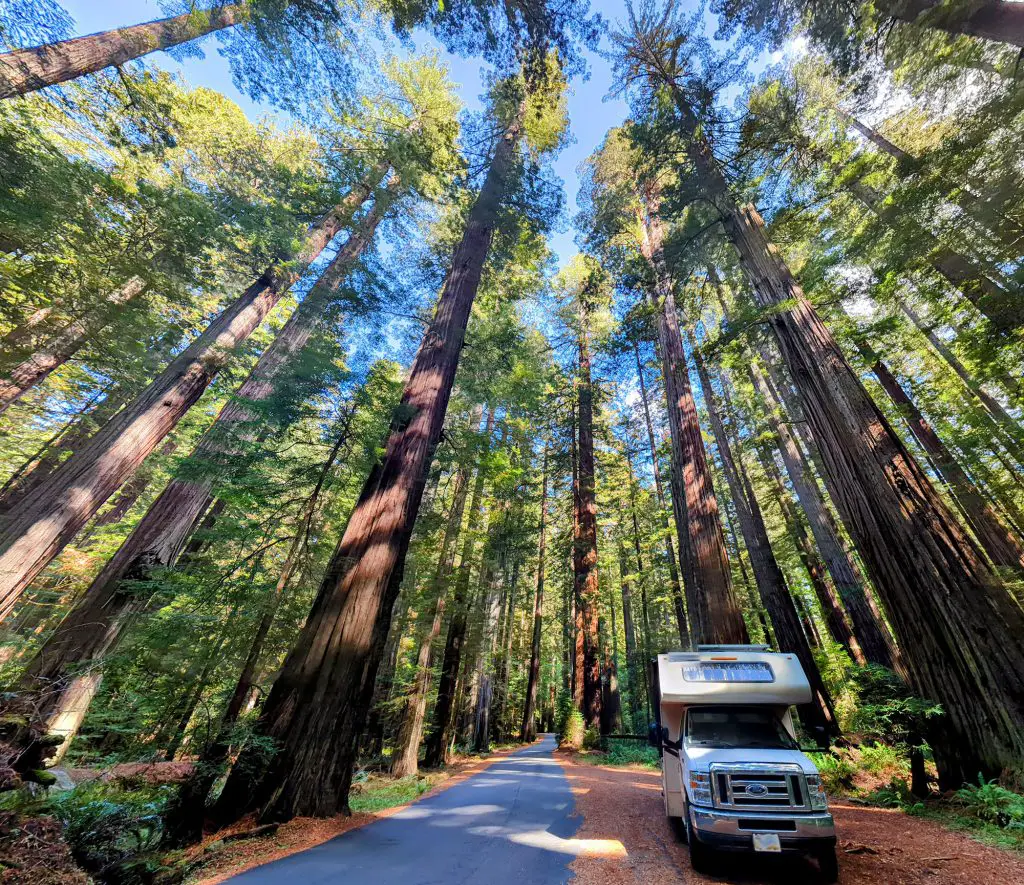Key Takeaways:
- Converting a van into a campervan offers limitless possibilities for personalization and adventure.
- The main limitation is the size of the van and the imagination of the individual undertaking the project.
- Selecting the right van is crucial, with options like extended-body vans and those with elevated roofs offering more interior space.
- Creative use of doors can optimize space and functionality within the camper.
- Maximizing space involves thoughtful design, such as converting couches into beds or installing fixed beds with storage drawers.
- External space can be expanded with the addition of awnings, providing shelter and extra living space outside the van.
- Solar panels offer a quieter and more efficient alternative to traditional generators for powering accessories.
- Running water systems, including freshwater and wastewater tanks, can be installed to enhance convenience during camping trips.
- Converting a van into a campervan involves steps such as budgeting, selecting the right van, designing the layout, insulating the interior, installing flooring and wall paneling, and adding sleeping, seating, kitchen, storage, electrical, and plumbing systems.
- Popular vans for conversion include the Mercedes-Benz Sprinter, Ford Transit, Ram ProMaster, Volkswagen Transporter, and Nissan NV Series.
- Each van option has its pros and cons, such as interior space, fuel efficiency, reliability, customization potential, and availability.
- Despite the challenges, converting a van into a campervan is a rewarding process that opens up a world of possibilities for outdoor enthusiasts and adventurers.
By having a campervan conversion, you can enjoy the great outdoors in a more personal fashion. Unlike the old conversion vans of the 60s and 70s, you can convert one yourself so it has more than just a bed and fantastic sound system.
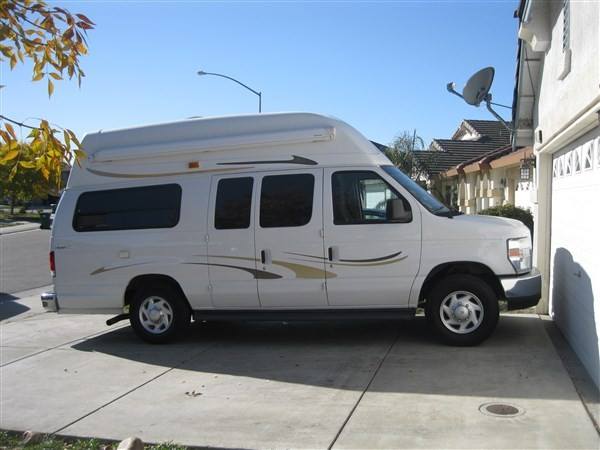 What are the limitations of converting a van to a campervan?
What are the limitations of converting a van to a campervan?
When it comes to converting a van into a campervan, the only real limitation lies within the imagination of the individual undertaking the project and the size of the van selected. Fortunately, there’s a wide array of options available to suit various needs and preferences. For those seeking maximum interior space, extended-body vans are an excellent choice, offering ample room to accommodate different layouts and amenities. Additionally, vans with elevated roofs provide extra headspace, enhancing comfort and livability inside the camper. It’s also worth considering the versatility of the van’s doors – both side and back doors can be utilized creatively to optimize space and functionality, further expanding the possibilities for customization and design. With a bit of creative thinking and careful planning, converting a van into a campervan opens up a world of possibilities for creating a comfortable and functional living space on wheels.
How do I create more space?
Creating more space in your campervan involves maximizing every available inch for both comfort and functionality. One common area where space can be optimized is the sleeping area. There are two main approaches to this: converting a couch into a bed or having a fixed bed with storage drawers underneath.
If you opt for a convertible couch bed, keep in mind that this may limit the storage space underneath the bed. Alternatively, a fixed bed with large drawers that slide out from the back when the rear doors are open offers ample storage capacity while maintaining sleeping comfort.
These drawers can serve dual purposes, functioning not only as storage but also as kitchen countertops. By integrating a stove into the top surface, you can create a convenient cooking area with additional food preparation space. To ensure stability when extended, consider adding legs to the end of the drawers.
Maximizing the space outside the side opening of your campervan is also key. One effective way to expand this area is by installing an awning. Similar to those found on larger motorhomes, an awning provides shelter and additional living space outside the van. Whether extending the length of the side doors or spanning from front to back, the choice is yours, offering versatility to suit your specific needs and preferences.
How do I power the accessories?
While traditional methods like generators are still an option, modern advancements offer a more efficient and quieter alternative: solar panels. Today’s solar panels are highly efficient and can generate ample power to run essential appliances like refrigerators, sound systems, TV, and even charge electronic devices such as cell phones and laptops. Installing solar panels on the roof of your van is often the best and safest approach, as it maximizes exposure to sunlight and minimizes the need for additional space or equipment. With solar power, you can enjoy the convenience of electricity while off-grid, without the noise and emissions associated with traditional generators.
[amazon table=”11071″]
Can I have running water?
Yes, you can have running water in your campervan with the installation of a freshwater tank and a water pump. The size of the tank will depend on your needs, but typically a 20 to 40-gallon tank is sufficient for washing dishes and providing water for other purposes. To make the most of your water supply, consider installing a flexible shower head attached to a hose, allowing for outdoor showers. This adds convenience and versatility to your campervan experience, especially when exploring remote areas.
In addition to a freshwater tank, it’s important to install a wastewater tank to properly manage gray and blackwater disposal. Many campgrounds have regulations against dumping fluids on the ground, so having a wastewater tank is essential for responsible camping practices. Some tanks can be installed underneath the van’s body, but drivers should be mindful of their presence, especially when traveling off-road.
Converting Steps
- Set a Budget and Plan: Determine your budget for the conversion project and outline your priorities and requirements. Consider factors such as sleeping arrangements, storage space, kitchen facilities, power sources, and amenities you wish to include in your camping van.
- Select the Right Van: Choose a van that suits your needs in terms of size, layout, and features. Popular options for camping conversions include cargo vans like the Mercedes Sprinter, Ford Transit, or Dodge Promaster, as well as smaller vans like the Volkswagen Transporter or Ford Transit Connect.
- Design the Layout: Create a layout plan for your camping van, taking into account the available space and your desired features. Consider the placement of sleeping areas, seating, storage cabinets, kitchen facilities, and other amenities. Optimize the layout to maximize functionality and comfort while ensuring efficient use of space.
- Insulate the Interior: Proper insulation is essential for maintaining a comfortable temperature inside the van and minimizing heat loss or gain. Install insulation material such as foam board or spray foam insulation in the walls, floor, and ceiling to provide thermal and sound insulation.
- Install Flooring and Wall Paneling: Choose durable and easy-to-clean flooring materials such as vinyl, laminate, or hardwood for the van interior. Install wall paneling or coverings to enhance the appearance of the interior and protect the insulation. Consider options like wood paneling, wallpaper, or fabric for a cozy and inviting look.
- Build Sleeping and Seating Areas: Construct a platform bed or sleeping platform that fits the dimensions of the van and provides comfortable sleeping accommodations. Consider options like a foldable sofa bed, bunk beds, or a raised platform with storage underneath. Install seatbelts for safety if you plan to travel with passengers.
- Create Kitchen Facilities: Design and build a kitchen area equipped with essential appliances and amenities for cooking and food preparation. Install a countertop, sink, and stove or cooktop, along with storage cabinets for kitchen utensils, cookware, and supplies. Consider options like a compact refrigerator or cooler for storing perishable food items.
- Add Storage Solutions: Incorporate ample storage space into the van design to keep your belongings organized and easily accessible. Install overhead cabinets, shelves, drawers, and storage bins to accommodate clothing, gear, food, and other essentials. Utilize every available space efficiently, including under-bed storage and overhead compartments.
- Install Electrical and Plumbing Systems: Set up electrical wiring and components to power lights, appliances, and electronic devices in the van. Install a leisure battery or solar power system to provide electricity for lighting, charging devices, and operating appliances. If desired, add a freshwater tank, sink, and plumbing system for on-the-go washing and cooking.
- Personalize the Interior: Add personal touches and decorative elements to make the camping van feel like home. Incorporate accessories like curtains, cushions, rugs, and wall art to enhance comfort and aesthetics. Consider functional additions like window shades, privacy screens, and mosquito nets for added convenience and comfort during camping trips.
- Test and Refine the Setup: Once the conversion is complete, thoroughly test all systems and components to ensure they function properly. Take the van on a test camping trip to identify any issues or areas for improvement. Make necessary adjustments and refinements based on your experience and feedback to optimize the functionality and comfort of your camping van.
The Best Vans For Conversion
Here are several key considerations to guide you in selecting the right van:
- Size and Layout: The size and layout of the van play a crucial role in determining the comfort and functionality of your campervan. Larger vans offer ample interior space, allowing for more flexibility in layout design and storage options. Smaller vans are more compact and maneuverable, ideal for those seeking simplicity and agility on the road.
- Interior Height: Consider the interior height of the van, as it directly impacts your ability to stand up and move around comfortably inside. High-roof or tall-roof vans provide generous headroom, creating a spacious and open living environment. This feature enhances overall comfort and convenience, especially during extended periods spent inside the van.
- Storage Space: Evaluate the available storage space within the van, including cabinets, drawers, and compartments. Ample storage is essential for organizing your belongings and equipment, ensuring a clutter-free living area. Consider whether the van offers built-in storage solutions or if modifications will be needed to accommodate your storage needs.
- Fuel Efficiency: Factor in the fuel efficiency of the van, as it can significantly impact your travel expenses. Look for vans with efficient engines and aerodynamic designs that offer good gas mileage. Opting for a fuel-efficient van allows you to travel longer distances on less fuel, saving you money and reducing your environmental footprint.
- Durability and Reliability: Choose a van known for its durability and reliability, especially if you plan to embark on long journeys or off-road adventures. Research the reputation of different van models and brands, paying attention to factors such as engine performance, build quality, and overall longevity. Investing in a dependable van ensures a safer and more enjoyable travel experience.
- Customization Potential: Assess the customization potential of the van, considering your specific preferences and needs for the campervan conversion. Look for vans with versatile interiors that can be easily modified to accommodate your desired layout, amenities, and features. Whether you plan to DIY the conversion or hire a professional, a van with customization potential allows you to create a personalized living space that suits your lifestyle.
Mercedes-Benz Sprinter
Pros:
- Spacious interior: The Sprinter offers ample space for living, sleeping, and storage, making it comfortable for extended trips.
- Tall roof options: With high roof configurations available, tall individuals can stand up comfortably inside the van, enhancing overall comfort.
- Excellent fuel efficiency: The Sprinter’s diesel engine options deliver impressive fuel economy, reducing long-term travel costs.
- Durable build: Known for its robust construction, the Sprinter is built to withstand the rigors of road travel and off-grid adventures.
- Customization potential: Campervan enthusiasts appreciate the Sprinter’s versatility, allowing for various layout configurations and luxury amenities.
Cons:
- Higher initial cost: Compared to some other vans, the Mercedes-Benz Sprinter may have a higher upfront purchase price, impacting overall conversion budget.
- Maintenance costs: While known for reliability, maintenance and repair costs for Mercedes-Benz vehicles can be higher than average.
- Limited availability: Depending on location, finding a Sprinter van for purchase may be more challenging compared to other models.
Ford Transit
Pros:
- Reliability: The Ford Transit is renowned for its durability and longevity, offering peace of mind for long-term campervan ownership.
- Affordability: With competitive pricing and widespread availability, the Transit is a budget-friendly option for DIY conversions.
- Flexibility: Multiple roof heights, wheelbase lengths, and engine options provide flexibility in design and layout, catering to various needs and preferences.
- Large interior space: The Transit’s generous cargo area offers ample room for customization, accommodating comfortable living and storage areas.
- Accessibility: Ford’s extensive dealer network and service centers make it easy to find parts and service support, even in remote areas.
Cons:
- Limited headroom: While the Transit offers decent interior space, taller individuals may find the roof height restrictive, requiring stooping or crouching.
- Fuel efficiency: Compared to some other vans, the Transit’s fuel economy may be less impressive, resulting in higher long-term travel costs.
- Less customization potential: While versatile, the Transit may have fewer luxury amenities and customization options compared to higher-end models like the Sprinter.
Ram ProMaster
Pros:
- Front-wheel-drive layout: The ProMaster’s front-wheel-drive configuration provides a lower floor height, resulting in more interior space and easier entry and exit.
- Spacious cargo area: With its boxy shape and expansive cargo area, the ProMaster offers ample room for campervan conversions, allowing for versatile layout options.
- Upfitting options: The ProMaster boasts a wide range of upfitting options and aftermarket accessories, making it customizable to suit individual preferences and needs.
- User-friendly design: DIY enthusiasts appreciate the ProMaster’s user-friendly design, which simplifies the conversion process and allows for easier installation of amenities and features.
Cons:
- Limited towing capacity: Compared to some rear-wheel-drive vans, the ProMaster’s towing capacity may be relatively lower, restricting the ability to tow larger trailers or vehicles.
- Interior height restrictions: While the front-wheel-drive layout provides more interior space, taller individuals may still find the ProMaster’s roof height limiting, requiring careful consideration of layout and design.
- Potential reliability issues: Some owners have reported reliability issues with certain ProMaster models, particularly related to transmission and electrical systems, which may require additional maintenance and repair.
Volkswagen Transporter (VW T5/T6)
Pros:
- Iconic design: The Volkswagen Transporter’s timeless design and classic appeal have earned it a dedicated following among campervan enthusiasts, adding character to any adventure.
- Maneuverability: With its compact size and agile handling, the Transporter is well-suited for navigating narrow roads, tight parking spaces, and urban environments.
- Efficient engines: The Transporter’s efficient engine options deliver solid performance and fuel economy, allowing for cost-effective travel and exploration.
- Cozy living space: Despite its smaller size, the Transporter offers a cozy and charming living space, providing all the essentials for comfortable camping and road trips.
Cons:
- Limited interior space: Compared to larger vans, the Transporter may have less interior space, requiring careful planning and organization to maximize living and storage areas.
- Higher initial cost: The Volkswagen Transporter’s iconic status and reputation for quality may result in a higher upfront purchase price compared to some other vans in its class.
- Potential reliability concerns: While generally reliable, some Transporter models may experience issues with electrical systems or engine components, necessitating regular maintenance and potential repairs.
Nissan NV Series
Pros:
- Robust platform: The Nissan NV Series, including the NV1500, NV2500, and NV3500, offers a sturdy and reliable platform for campervan conversions, capable of handling various layouts and amenities.
- Powerful V6 engine: Equipped with a potent V6 engine, the NV Series provides ample power and performance for both urban driving and highway cruising, ensuring a smooth and enjoyable travel experience.
- Spacious cargo area: The NV Series boasts a generous cargo area, offering plenty of room for customization and storage, making it suitable for accommodating essential amenities and gear for extended trips.
- Customizable interior options: With customizable interior options, the NV Series allows for personalized layouts and configurations to meet individual preferences and camping needs.
Cons:
- Limited availability: While the Nissan NV Series is a practical choice for campervan conversions, its availability may be more limited compared to other vans in its class, potentially affecting accessibility and pricing in certain regions.
- Interior design limitations: Some owners may find the interior design of the NV Series less conducive to camper conversions compared to vans with more modular and adaptable layouts, requiring additional customization and modifications.
- Fuel efficiency: While the V6 engine provides ample power, the NV Series may have lower fuel efficiency compared to some other vans, resulting in higher operating costs over time, especially during long-distance travel.
Dodge/Mercedes-Benz Sprinter Classic
Pros:
- Legendary reliability: The Dodge/Mercedes-Benz Sprinter Classic, also known as the Sprinter T1N, is renowned for its legendary reliability and durability, making it a trusted choice for long-term campervan adventures.
- Diesel engine options: With diesel engine options available, the Sprinter Classic offers excellent fuel efficiency and torque for efficient and capable performance, particularly during long-distance travel and off-grid camping.
- Straightforward design: The Sprinter Classic features a straightforward and functional design, making it easier for DIY enthusiasts to customize and convert into a camper, with fewer complex systems and components to navigate.
- Solid platform: Despite being an older model, the Sprinter Classic provides a solid platform for camper conversions, offering ample interior space and cargo capacity for accommodating essential amenities and living quarters.
Cons:
- Limited modern features: Compared to newer Sprinter models, the Sprinter Classic may lack some of the modern amenities and technological features found in updated vans, potentially impacting convenience and comfort during travel.
- Higher mileage: Due to its age, many Sprinter Classic models may have higher mileage, requiring careful inspection and maintenance to ensure continued reliability and performance, which could add to ownership costs over time.
- Availability and pricing: While the Sprinter Classic remains popular among campervan enthusiasts, finding well-maintained used models at reasonable prices may be challenging, especially in certain regions where availability is limited.
In conclusion, converting a van into a campervan offers endless possibilities for adventure and exploration. With careful planning and creative design, you can transform a standard van into a comfortable and functional home on wheels, complete with all the amenities you need for life on the road. From choosing the right van to installing solar panels, creating more space, and incorporating running water systems, there are numerous options to customize your campervan to suit your unique needs and preferences. Whether you’re a DIY enthusiast or prefer to enlist the help of professionals, the process of converting a van into a campervan is a rewarding journey that opens up a world of possibilities for outdoor enthusiasts and adventure seekers alike.


